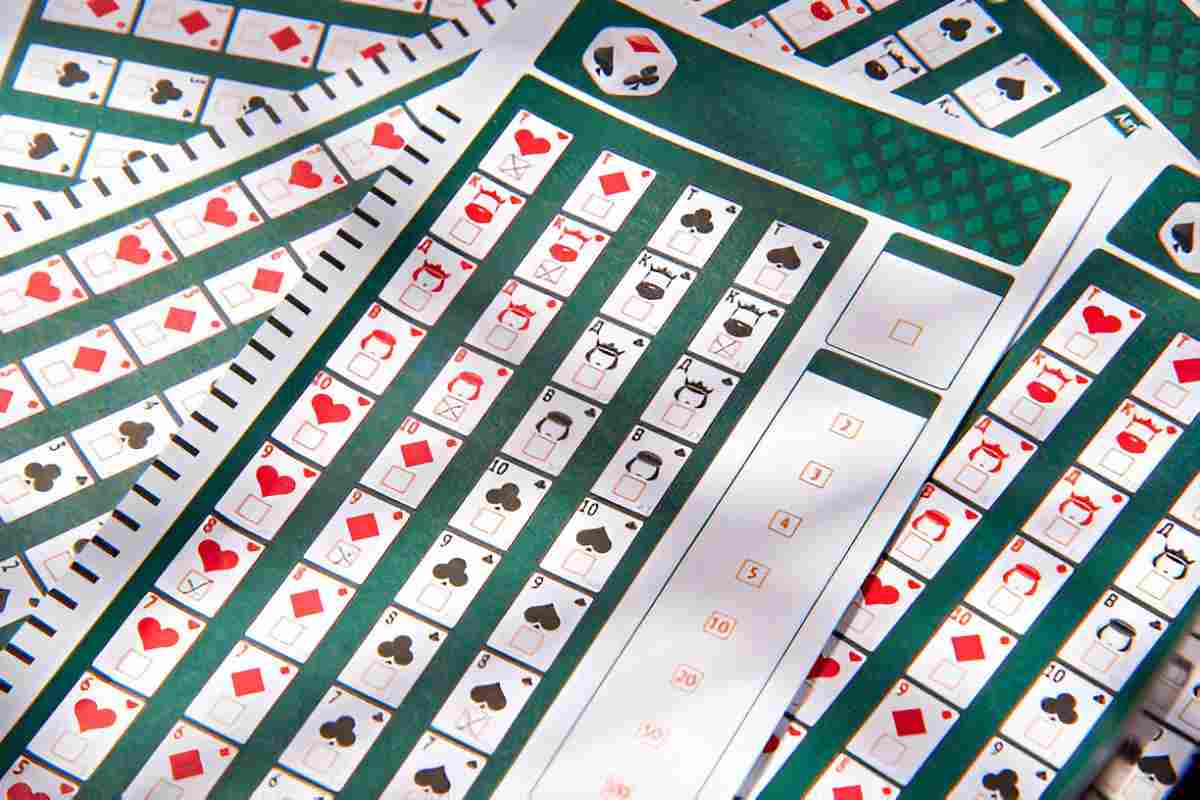Welcome to the ultimate guide for transforming your poker game from novice to pro. Whether you’re a beginner eager to learn or someone aiming to refine your skills, this cheat sheet will cover everything you need to know about playing poker effectively. From basic hand rankings to advanced tactics, each section is crafted to enhance your understanding and gameplay strategy.
Table of Contents
- Understanding the Basics: Poker Hand Rankings
- Essential Poker Terminology Every Player Should Know
- Strategies for Different Poker Variants: Texas Hold'em vs
- Reading Your Opponents: The Art of Bluffing
- Bankroll Management: How to Play Smart and Stay in the Game
- Common Mistakes to Avoid as a Beginner
- Advanced Tactics: When to Raise, Call, or Fold
- The Importance of Position at the Poker Table
- Resources for Continued Learning: Books, Videos, and Online Courses
- Conslsuion
- FAQs
Understanding the Basics: Poker Hand Rankings
Before diving into the world of poker, it’s crucial to understand the hand rankings, which dictate the strength of your hand compared to others. The hand rankings are as follows:
- Royal Flush: A, K, Q, J, 10 of the same suit.
- Straight Flush: Five consecutive cards of the same suit.
- Four of a Kind: Four cards of the same rank.
- Full House: Three of a kind and a pair.
- Flush: Five cards of the same suit, not in sequence.
- Straight: Five consecutive cards of different suits.
- Three of a Kind: Three cards of the same rank.
- Two Pair: Two sets of pairs.
- One Pair: Two cards of the same rank.
- High Card: The highest card in your hand if no other hand is made.
Knowing these rankings helps you evaluate your hand versus your opponents’ hands while making decisions during the game. Each hand has its own unique characteristics and potential, and understanding these can significantly enhance your strategic approach. For instance, a Royal Flush is not only the highest hand but also the rarest, making it a coveted achievement in any poker game. Conversely, a High Card hand may seem weak, but it can still lead to victory if your opponents fail to form any stronger combinations.
Moreover, the dynamics of poker are further complicated by the betting strategies employed by players. Understanding hand rankings is just the beginning; recognizing when to bet, raise, or fold based on your hand’s strength relative to the community cards and your opponents’ actions is essential. For example, if you hold a Flush but notice that an opponent is aggressively betting, you must assess whether their behavior suggests they might have a stronger hand, such as a Full House. This interplay of psychology and strategy is what makes poker not just a game of chance, but a thrilling battle of wits.
Essential Poker Terminology Every Player Should Know
Familiarizing yourself with poker terminology is essential for effective communication at the table. Here are some key terms to know:

- Blinds: Forced bets made by the two players to the left of the dealer button.
- Button: A marker that indicates the dealer’s position.
- Flop: The first three community cards dealt face-up on the table.
- Turn: The fourth community card dealt face-up.
- River: The fifth and final community card.
- All-In: Betting all your chips at once.
- Check: To pass the action without betting.
- Fold: To discard your hand and forfeit the round.
Understanding these terms will greatly enhance your confidence during gameplay and help you follow the flow of the game more easily. Additionally, becoming familiar with other poker-related jargon can further enrich your experience. For instance, terms like “pot odds” refer to the ratio of the current size of the pot to the size of the bet you must call, which is crucial for making informed betting decisions. Similarly, “tilt” describes a state of emotional frustration that can lead to poor decision-making, often resulting in significant losses. Recognizing these terms can provide deeper insights into both your own gameplay and that of your opponents.
Moreover, poker is not just about knowing the rules; it’s also about understanding the psychology behind the game. Terms like “bluff” and “tell” are vital for reading your opponents and gauging their potential hands. A “bluff” is when a player bets or raises with a weak hand to induce their opponents to fold stronger hands, while a “tell” refers to a subtle change in behavior or demeanor that might give away information about a player’s hand. Mastering these concepts can elevate your strategic approach, allowing you to not only play your cards well but also to outsmart your opponents at the table.
Strategies for Different Poker Variants: Texas Hold’em vs
While Texas Hold’em is one of the most popular variants of poker Sheet , there are several strategies that vary depending on the game type. Here’s a breakdown of strategies for Texas Hold’em:
In Texas Hold’em, you play with two hole cards and five community cards. It’s important to develop a starting hand strategy:
- Premium Hands: Play aggressively with strong starting hands like Aces, Kings, or Queens.
- Position Play: Adapt your strategy based on your position at the table; play tighter in early positions.
- Pot Odds: Make decisions based on the ratio of the current size of the pot to the size of the bet.
Utilizing these strategies will give you a solid foundation in one of poker’s most thrilling variants. Additionally, understanding the psychological aspects of the game can significantly enhance your performance. Reading your opponents and recognizing their betting patterns can provide insights into their potential hands. For instance, if a player consistently raises in early positions, they may be holding a strong hand, whereas a player who frequently calls might be more unpredictable.
Moreover, mastering the art of bluffing is crucial in Texas Hold’em. A well-timed bluff can force opponents to fold even when they have a stronger hand. However, it’s essential to gauge the table dynamics and your opponents’ tendencies before attempting a bluff. If you can establish a tight image early on, your bluffs may be more effective, as players will be more inclined to believe you have a strong hand. Balancing your play between aggressive betting and strategic folding will keep your opponents guessing and give you a competitive edge.
Reading Your Opponents: The Art of Bluffing
Bluffing is a crucial aspect of poker, allowing you to win pots even when you don’t have the best hand. However, effective bluffing requires understanding your opponents’ behaviors:

- Observe Betting Patterns: Pay attention to how your opponents bet to determine the strength of their hands.
- Consider Table Dynamics: Use information about the overall table to inform your bluffing strategy.
- Timing is Key: Bluffing on the river can be more effective when the board shows potential strong hands.
Mastering the art of bluffing can elevate your gameplay and keep your opponents guessing. Beyond just observing your opponents, it’s essential to develop a keen sense of psychological insight. Each player has their own unique tells—subtle cues that can reveal whether they are confident or uncertain about their hand. For instance, a player who suddenly becomes overly chatty might be trying to mask their anxiety, while a normally talkative player who goes quiet could be hiding a strong hand. Recognizing these tells can provide you with a significant advantage, allowing you to tailor your bluffs more effectively.
Additionally, the environment in which you play can greatly influence your bluffing strategy. In a high-stakes game, where players are more cautious and risk-averse, a well-timed bluff can be particularly potent. Conversely, in a more casual setting, players might be more inclined to call your bets, regardless of the strength of their hands. Understanding the mood and tendencies of your opponents can help you decide when to push the envelope and when to play it safe. The art of bluffing is not just about deception; it’s about reading the room and adapting your strategy to maximize your chances of success.
Bankroll Management: How to Play Smart and Stay in the Game
Effective bankroll management is essential for any poker player. It helps you play longer and avoids going bust too quickly. Here are some tips:
- Set a Budget: Determine how much you can afford to play without affecting your financial stability.
- Choose the Right Stakes: Play at stakes where your bankroll can withstand variance and losses.
- Avoid Chasing Losses: Stick to your strategy and budget, even after losing a few rounds.
By following these guidelines, you can preserve your bankroll and maintain a sustainable poker habit.
Additionally, it’s important to regularly assess your bankroll and adjust your strategy accordingly. As you gain experience and improve your skills, you might find that you can move up in stakes. However, it’s crucial to do this gradually and ensure that your bankroll can support the increased risk. A good rule of thumb is to have at least 20 to 30 buy-ins for the level you wish to play. This cushion allows you to absorb the inevitable swings that come with the game.
Moreover, consider tracking your results meticulously. Keeping a record of your wins and losses not only helps you understand your performance but also allows you to identify patterns in your play. Are you more successful at certain stakes or types of games? By analyzing this data, you can make informed decisions about where to invest your bankroll and refine your strategy for better outcomes. Remember, the goal is not just to play, but to play smart and maximize your potential for success.
Common Mistakes to Avoid as a Beginner
Many beginners fall into specific traps that hinder their performance. Here are a few common mistakes to avoid:
- Playing Too Many Hands: It’s essential to be selective about the hands you play, especially during the early stages.
- Ignoring Position: Your seat at the table should influence your playing style; recognize the benefits of being in late position.
- Failure to Adjust: Be flexible in your strategies based on opponents’ styles, stack sizes, and game dynamics.
By being mindful of these pitfalls, you can improve your game significantly and avoid some painful lessons.
Advanced Tactics: When to Raise, Call, or Fold
Understanding when to raise, call, or fold is critical to mastering poker. Here are advanced tactics for making these decisions:
- Raising: Use raises to apply pressure, isolate an opponent, or to build a pot when you have a strong hand.
- Calling: Call when you believe your hand has value but want to keep weaker opponents in the game.
- Folding: Don’t be afraid to fold strong cards if the situation calls for it; know when to cut your losses.
Being able to assess situations quickly and make informed decisions can set you apart from average players.
The Importance of Position at the Poker Table
Position is one of the most important concepts in poker. Your position can significantly influence your betting strategy:
- Early Position: Play more cautiously since you will act before most other players.
- Middle Position: You can start to widen your range as you gain more information from the actions of others.
- Late Position: This is where you can play more aggressively, as you’ll have the advantage of observing your opponents’ actions.
Utilizing your position wisely can greatly increase your chances of winning more pots.
Resources for Continued Learning: Books, Videos, and Online Courses
Continued education is key to improving your poker skills. Here are some valuable resources:
- Books: Look for classics like “The Theory of Poker” by David Sklansky and “Harrington on Hold’em” by Dan Harrington.
- Videos: Platforms like YouTube have countless tutorial videos that break down various strategies and concepts.
- Online Courses: Websites like MasterClass and Upswing Poker offer comprehensive courses taught by professional players.
Dedicating time to learn from these resources can enhance your understanding and skill set in poker.
Conslsuion
Transitioning from novice to pro in poker requires patience, practice, and learning. By understanding the game’s mechanics, utilizing effective strategies, and managing your bankroll responsibly, you will be well on your way to mastering poker. Always reflect on your game, learn from experiences, and stay committed to improvement.
FAQs
A pair of Aces is the strongest starting hand.
Practice reading your opponents and become familiar with different betting patterns.
Yes, online poker often has quicker gameplay and less ability to read opponents based on physical tells.
No, it’s essential to balance aggression with caution, depending on the situation.
Very important, as it impacts the information available and the actions of other players.










